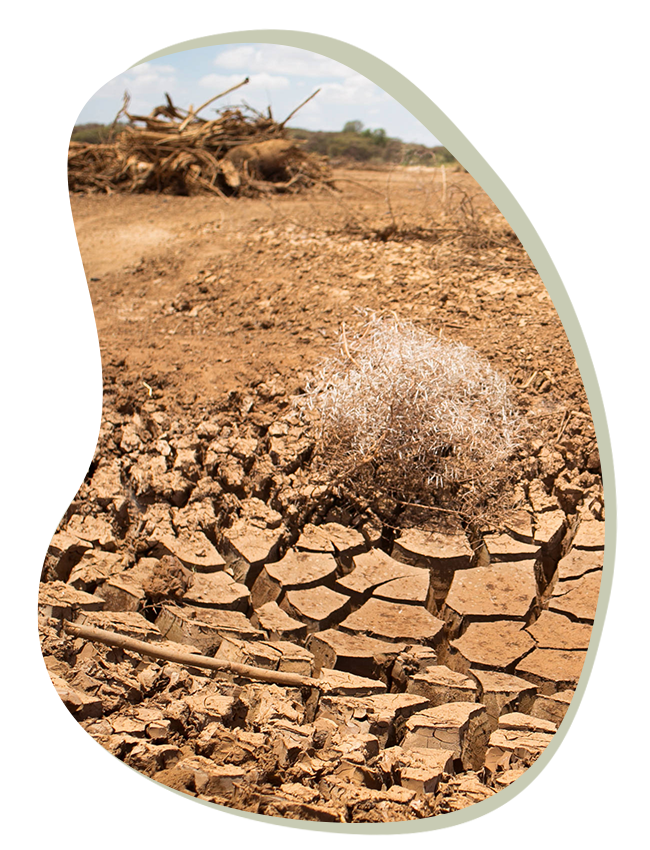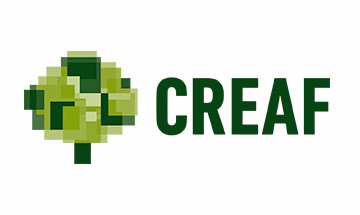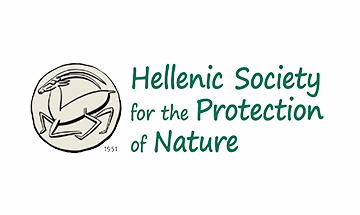About project
Project Overview
NewLife4Drylands project aims to contrast the soil degradation leading to desertification, by using Nature-Based Solutions (NBS). NewLife4Drylands aims to provide a framework and a protocol for identifying sustainable solutions that could be successfully implemented in degraded drylands e.g. restoration land activities aiming to improve vegetation cover and productivity in those areas where desertification processes are undergoing (vulnerable areas). In addition, the project will develop specific techniques to monitor failures and successes of restoration activities.
This project has its focus on developing a protocol for the identification of dryland characteristics and for a mid and long-term monitoring of restoration interventions of desertified lands through the use of remote sensing techniques. Remote Sensing (RS) can complement the lack of long term, reliable and homogeneous in situ information, usually rather timely and cost expensive. The protocol is based on high resolution Earth Observation (EO) data and applying remote sensing methodologies. Moreover, it provides a clear, specific and costless assessment of the restoration process useful for further decision-making in interventions.

Expected Results
A restoration protocol based on Nature-Based Solutions.
A mid- and long-term monitoring model based on Remote Sensing.
A monitoring report on 4 restored areas in Spain, Italy and Greece.
A Restoration Plan to implement Nature-Based Solutions for Asterousia Mts, Greece and Alta Murgia, Italy.
Project Partners
Institute of Atmospheric Pollution Research – National Research Council of Italy (CNR-IIA), Italy
The Institute of Atmospheric Pollution Research of CNR (CNR-IIA) undertakes research and development activities in observation systems and networks for air pollution in support of European directives and international conventions; development of systems and technologies for geospatial data sharing and interoperability.
The Institute is the project coordinator and during the project coordinate “Remote sensing indicators for desertification” action to setting up the procedures for generating indicators useful for monitoring the effectiveness of the restoration actions in the pilot sites, from satellite data. Also, the institute work on “Monitoring restoration cases based on NBS” action to select specific areas of grained soils in Alta Murgia site and test different ecology restoration techniques to verify the feasibility to restore the grassland habitat, with its vegetation communities.
Italian Institute for Environmental Protection and Research (ISPRA), Italy
ISPRA is a public research body, with technical, scientific, organizational, managerial, administrative and financial autonomy, subject to the vigilance of the Ministry for the Environment, Land and Sea. It is the institutional and technical-scientific reference point for the whole country in environmental and land monitoring and information fields.
ISPRA coordinate “Monitoring model” action for the implementation of monitoring model able to connect NBS and remote sensing indicators to be used as a support in decision making for adaptive management of restoration actions in drylands, improving ecosystems services provision; also it define the Protocol for design, implementation and maintenance of NBS, as action leader.
Department of Environmental Biology – Sapienza University of Rome (SAPIENZA), Italy
Sapienza University of Rome is a public Educational and Research Institution, and the largest University in Europe for number of students. The project activities will be implemented by the Dep. of Environmental Biology (DEB), which is composed of researchers and experts in the field of plant physiology, diversity and ecology.
Sapienza is the action leader of “Monitoring restoration cases based on NBS” action, it coordinate the activities of specific analysis for the case study areas and activity to the evaluation of the effects of restoration measures.
Sapienza collaborate to action “Setting the frame for desertification and NBSs” to identify the framework of current land use, drivers of land degradation and related effects of the drivers of Palo Laziale and Nestos sites and it collaborate on the “definition of a monitoring model” and “Definition of protocol for design, implementation and maintenance of NBS in drylands”.
Institute of BioEconomy – National Research Council of Italy (CNR-IBE), Italy
CNR-IBE is an interdisciplinary institutes committed to study and monitor the effects of environmental variables on the terrestrial resources, including the impacts of climate change, through the assessment of the ecosystem services provided by different natural and seminatural systems. Moreover, it deals with research activities on sustainable management of resources for agricultural productions aimed to adapt to and mitigate climate change impacts.
In the context of NL4DL, CNR-IBE is coordinator of Action 1 “Setting the frame for desertification and NBSs”, which aims to identify the external pressures and the degradation processes in each case study, the ground and remote sensing data availability for a list of indicators and the ecosystem services that deserve protection and restoration. The framework will allow the identification of the relationships between the stocks of land-based natural capital that yields a flow of valuable ES for the fulfilment of human needs, and will serve to assess and compare the ES at ex-ante and at ex-post NBS implementation. The Institute also collaborates in the following actions “Definition of a monitoring model”, in “Monitoring restoration cases based on NBS” and in the “Definition of a protocol for design, implementation and maintenance of NBS in drylands”.
Center for Ecological Research and Forestry Applications (CREAF), Spain
CREAF is a public research center dedicated to terrestrial ecology, trritorial analysis and global change, and expert in Earth Observation (EO), pursuing excellence in the production and dissemination of knowledge, in addition to the innovation, development, and transfer of methodologies.
CREAF during the project work on “Monitoring restoration cases based on NBS” action to collect data on desertification problems, adopted NBS, effects on environmental quality and socio-economic information and evaluation of the effects of restoration measures
The Center collaborate to action “Setting the frame for desertification and NBSs” to identify the framework of current land use, drivers of land degradation and related effects of the drivers of the Green Link sites El Bruc (Catalonia) and Tifaracás (Gran Canaria), “definition of a monitoring model” and “Definition of protocol for design, implementation and maintenance of NBS in drylands” actions.
University of Crete – Natural History Museum of Crete (UoC – NHMC), Greece
UoC has 17 Departments in 5 Schools including the Natural History Museum which will implement the project. Natural History Museum of Crete (NHMC) the activity regards research on the environment of the Eastern Mediterranean at all levelsand diffusion of the knowledge accumulated to all the sectors of the society.
In Crete site, UoC will provide the definition of a NBS restoration plan for the pilot area of Asterousia. The plan takes into account international directions (i.e. IUCN publications and the ThinkNature project handbook) and data are already available.
The University collaborate to action “Setting the frame for desertification and NBSs” to identify the framework of current land use, drivers of land degradation and related effects of the drivers of the Asterousia Mountain, “definition of a monitoring model” and “Definition of protocol for design, implementation and maintenance of NBS in drylands” actions.
Hellenic Society for the Protection of Nature (HSPN), Greece
The Hellenic Society for the Protection of Nature (HSPN) is the oldest environmental organisation in Greece, founded in 1951, and functions as a non-profit society.
The HSPN will take care of all the communication activities of the project (B1-B4). The Society support the organisation of events for the local community, the networking activity with other LIFE and/or non-LIFE projects and produce all Material for communication activities on the basis of a detailed dissemination plan produced.
Advisory Board
Corrado Battisti |
Rome Municipality -Protected areas Unit |
Nektarios Chrysoulakis |
Foundation for Research and Technology Hellas (FORTH) |
Carmelo Dazzi |
Universita’ di Palermo |
Domenico Nicoletti |
Director of the Alta Murgia National Park |
Nikolaos Nikolaidis |
Technical University of Crete (TUC) |
Nicola Pirrone |
CNR-IIA |
Giovanni Quaranta |
University of Basilicata |
Luca Salvati |
Macerata University |
Riccardo Santolini |
Urbino University |
Gustavo Viera |
Gesplan (public company of the Government of Gran Canaria) |
LIFE Programme
The NewLife4Drylands – LIFE20 PRE/IT/000007 – is funded by at most a percentage of 60% from the LIFE financial instrument “LIFE Preparatory project – Programme for the Environment and Climate Action” of the European Commission.
LIFE is the European Programme for the Environment and Climate Action. The legal basis for LIFE is Regulation 1293/2013 of the European Parliament and of the Council of 11 December 2013.
According to the LIFE Regulation, Preparatory projects address specific needs for the development and implementation of Union environmental or climate policy and legislation.
Other funding
The GREEN FUND with its Board Decision No. 212.4.3/2021/26.05.2021 co-finances the LIFE20PRE/IT/000007 – NewLife4Drylands project for year 2021 with the total amount of €20,000.00.
According to the aforementioned decision, co-financing totaling to €10,000.00 is provided to the University of Crete – Natural History Museum of Crete (UoC – NHMC), and also the amount of €10,000.00 is provided to the Hellenic Society for the Protection of Nature (HSPN).
Contacts
write us to find out more about the project!
coordinator@newlife4drylands.eu
info@newlife4drylands.eu
The LIFE20 PRE/IT/000007 project is funded at a percentage of 60% from the LIFE financial instrument “LIFE Preparatory project – Programme for the Environment and Climate Action” of the European Commission.
The GREEN FUND co-finances the NewLife4Drylands project for 2021, 2022 and 2023 through financing the University of Crete – Natural History Museum of Crete and the Hellenic Society for the Protection of Nature partners with the total amount of €52,000.00.










